Rio de Janeiro’s Little Africa offers visitors a unique opportunity to explore the city’s rich Afro-Brazilian heritage. A self-guided audio tour provides an engaging and immersive experience, allowing participants to explore the neighborhood’s significant landmarks and uncover the resilience of the local community. From the iconic Valongo Wharf to the vibrant street art, the tour guides listeners through a captivating narrative that highlights the impact of slavery and the enduring influence of traditions like capoeira and samba. As you embark on this journey, prepare to be captivated by the powerful stories that have shaped the cultural identity of this vibrant neighborhood.
Key Points
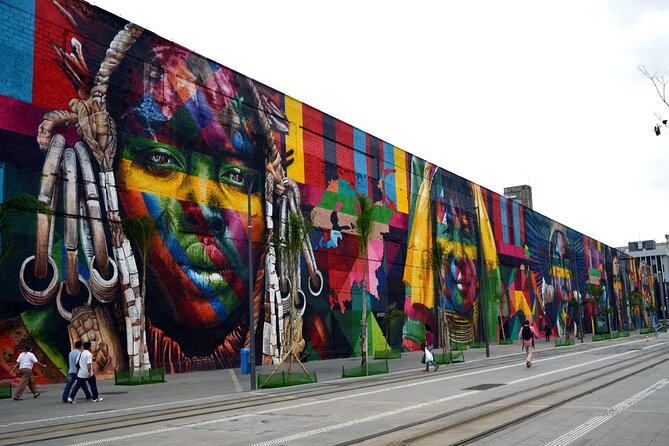
-
Explore the rich Afro-Brazilian cultural heritage of Little Africa, a historical neighborhood deeply connected to Brazil’s legacy of slavery.
-
Discover important landmarks like the Valongo Wharf, a UNESCO World Heritage site, and learn about figures like Zumbi dos Palmares, a symbol of resistance.
-
Enjoy vibrant Afro-Brazilian traditions, such as capoeira, samba schools, and Candomblé, and witness their significance in shaping the community’s identity.
-
Gain insights into the lasting impacts of the transatlantic slave trade and the resilience of the Afro-Brazilian community in overcoming adversity.
-
Engage with the local community, explore the neighborhood’s lively markets and street art, and foster mutual understanding through cultural exchange.
Historical Context of Little Africa
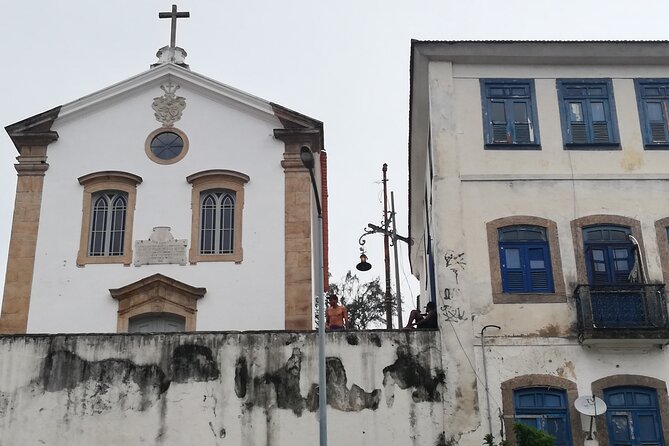
Little Africa’s rich history is deeply intertwined with the legacy of slavery in Brazil.
This vibrant neighborhood was once a hub for African immigrants and their descendants, who settled here after being forcibly brought to Brazil as slaves.
Over time, Little Africa became a thriving cultural center, known for its music, dance, and Afro-Brazilian traditions.
Today, the area still retains its unique character, with colorful buildings, lively markets, and remnants of the past that tell the story of Brazil’s complex racial history.
Exploring Little Africa on this audio tour offers a glimpse into the resilience and contributions of the Afro-Brazilian community.
Loving the local insights? Here are more guided experiences we recommend in Rio de Janeiro
Key Figures and Landmarks in the Tour
On this self-guided audio tour, visitors will discover key figures and landmarks that have shaped the cultural legacy of Rio de Janeiro’s historic Little Africa neighborhood.
The tour highlights the Valongo Wharf, a UNESCO World Heritage site that was once the largest slave market in the Americas. Visitors will also learn about figures like Zumbi dos Palmares, a legendary leader of the Quilombo dos Palmares, a community of runaway slaves.
Other notable stops include the Etnias – Mural de Graffiti (Estádio Kobra), a vibrant mural celebrating Afro-Brazilian culture, and the Imperatriz Leopoldinense samba school, a hub of Afro-Brazilian music and dance.
Exploring Afro-Brazilian Cultural Traditions
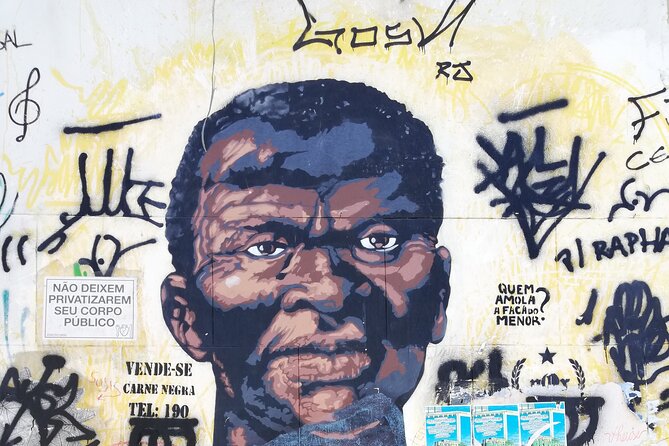
One of the key highlights of the self-guided audio tour is the exploration of Afro-Brazilian cultural traditions that have shaped the identity of Rio de Janeiro’s historic Little Africa neighborhood. Visitors will learn about the significance of capoeira, an Afro-Brazilian martial art that combines dance, music, and acrobatics. They’ll also discover the vibrant samba schools, which play a central role in the city’s renowned Carnival celebrations. Plus, the tour delves into the rich legacy of Candomblé, an Afro-Brazilian religion rooted in West African spiritual practices.
| Cultural Tradition | Significance |
|---|---|
| Capoeira | Combines martial arts, dance, and music |
| Samba Schools | Central to Rio’s Carnival festivities |
| Candomblé | Afro-Brazilian religion with West African origins |
The Legacy of Slavery in Rio
The self-guided audio tour also delves into the sobering legacy of slavery in Rio de Janeiro, exploring how the city’s Afro-Brazilian heritage was shaped by the inhumane institution.
The tour highlights:
-
The crucial role of the Port of Rio in the transatlantic slave trade, through which an estimated 1.9 million enslaved Africans were forcibly brought to Brazil.
-
The hotel of "Little Africa," a neighborhood where many formerly enslaved people settled and built vibrant communities, preserving their cultural traditions.
-
The ongoing impact of slavery’s legacy, including socioeconomic disparities and ongoing racial discrimination faced by Afro-Brazilians in Rio.
Through this immersive experience, visitors gain a deeper understanding of the complex and enduring influence of slavery on Rio’s past and present.
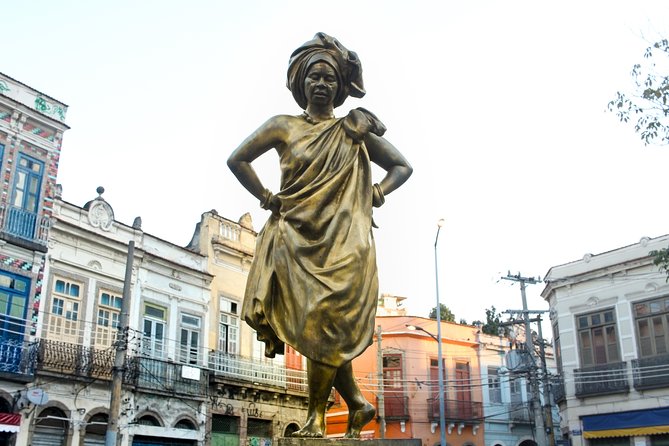
Navigating the self-guided audio tour is a straightforward process. After downloading the VoiceMap app, you can access the tour and begin your journey at the starting point outside the Museu de Arte do Rio. The audio will guide you through the highlights of Little Africa, providing insightful commentary on the neighborhood’s rich Black history. Along the way, you can pause, rewind, or restart the tour at your own pace, ensuring a personalized experience. The tour culminates at the Etnias – Mural de Graffiti (Estádio Kobra), where you can explore the vibrant street art and reflect on the stories you’ve heard.
| Tour Details | Description |
|---|---|
| Duration | Approximately 40 minutes (may vary) |
| Start Point | Outside Museu de Arte do Rio, Praça Mauá |
| End Point | Etnias – Mural de Graffiti (Estádio Kobra) |
| Accessibility | Not wheelchair accessible |
Fascinated by Rio de Janeiro's past? More historical tours we've covered
- Discover Rio Little Africa: A Cultural and Historical Journey
- Private Walking and Cultural Tour Rocinha-Rio De Janeiro
- Rio Gastronomy: Culture & History Through The Art Of Food – Walking Group Tour
- Olympic Boulevard, Museum of Tomorrow & Historical Rio
- Learn the History of Rio With an Unforgettable City Center Walking Tour
- Adventure & History at Tijuca Forest (Small Group or Private)
Experiencing the Vibrant Neighborhood
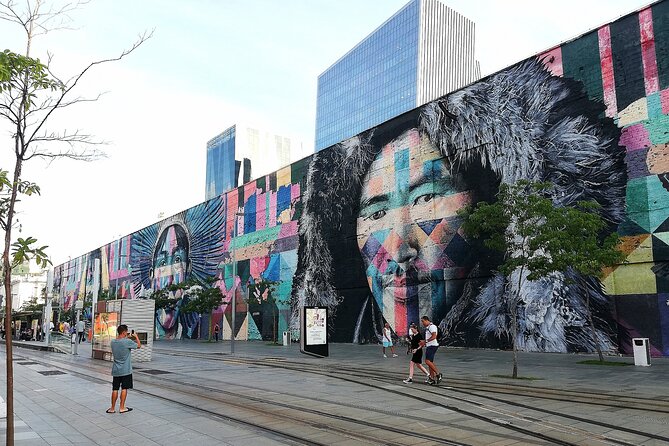
As you embark on the self-guided audio tour, you’ll learn about the vibrant energy of Rio de Janeiro’s Little Africa. This historic neighborhood pulsates with Afro-Brazilian culture, from the rhythmic beats of samba to the colorful murals and lively street markets.
Some highlights you’ll experience include:
-
Strolling through the lively Praca Maua, a central square that serves as a hub for community gatherings and cultural events.
-
Admiring the striking graffiti murals that adorn the walls, showcasing the neighborhood’s rich artistic heritage.
-
Exploring the bustling Feira de Sao Cristovao, a renowned market where you can browse stalls selling traditional Afro-Brazilian crafts, clothing, and cuisine.
Prepare to be captivated by the vibrancy and resilience of this dynamic community.
Connecting With the Local Community
Beyond simply admiring the vibrant visuals, the self-guided audio tour encourages travelers to meaningfully connect with the local community.
By highlighting local businesses, community centers, and cultural landmarks, the tour provides insights into the daily lives and rich traditions of the residents. Listeners learn about the neighborhood’s history, its resilience in the face of adversity, and the importance of preserving its Afro-Brazilian identity.
This deeper understanding fosters a sense of respect and appreciation, allowing visitors to engage with the community on a more authentic level.
The tour ultimately aims to bridge the gap between travelers and locals, creating opportunities for cultural exchange and mutual understanding.
Reflections on the Black History Tour
The self-guided Black History Audio Tour of Rio de Janeiro’s Little Africa offers visitors a captivating window into the vibrant and resilient Afro-Brazilian community.
Through the tour, participants can:
-
Gain a deeper understanding of the history and cultural significance of this historic neighborhood.
-
Appreciate the resilience and perseverance of the Afro-Brazilian people in the face of adversity.
-
Reflect on the ongoing efforts to preserve and celebrate the rich heritage of Little Africa.
The tour’s engaging narrative and immersive experience provide a powerful and thought-provoking journey that illuminates the enduring impact of Black history in Rio de Janeiro.
Recap
The self-guided Black history audio tour of Rio de Janeiro’s Little Africa provides an immersive and enlightening experience. Visitors can explore the neighborhood’s rich cultural heritage, learn about the legacy of slavery, and connect with the resilient Afro-Brazilian community. Through engaging narratives and significant landmarks, the tour offers a powerful opportunity to gain insights into the enduring influence of African traditions in shaping the city’s identity.
More Guided Tours in Rio de Janeiro
More Tours in Rio de Janeiro
- Rio De Janeiro: Downtown Walking Tour
- Unforgettable Private Day Tour in Rio – Santa Teresa and Downtown
- Rio Shore Excursion: Christ Redeemer, Sugarloaf and Selarón Steps 6-Hour Tour
- Half-Day Tour in Rio De Janeiro
- Private Speedboat Tour in Rio De Janeiro
- Petropolis the Imperial City With Beer Tour and Lunch
More Tour Reviews in Rio de Janeiro
- Discover Noronha: 7-Hour Ilhatour Adventure
- Private Sugar Loaf With Fast Pass Ticket and Hotel Pick up
- Rio De Janeiro: 30-Minute Tandem Paragliding Flight
- Rio De Janeiro: Vasco Da Gama Matchday Experience With Local
- Rio Essencial: the 3 Must-See Tourist Attractions
- From Rio: Arraial Do Cabo Day Trip With Boat Tour
Not for you? Here's more things to do in Rio de Janeiro we have recnetly reviewed
- 6 Best Canoe And Kayak Experiences In Rio De Janeiro
- 6 Best Canoe And Kayak Experiences In Rio De Janeiro
- 14 Best Food Tours in Rio De Janeiro
- 20 Best Full-Day Tours in Rio De Janeiro
- 2 Best 2 Day Tours In Rio De Janeiro
- 3 Best 3 Day Tours in Rio De Janeiro
- Best Jet-Ski Experiences in Rio De Janeiro
- 2 Best 4 Day Tours in Rio De Janeiro
- 3 Best BBQ Experiences In Rio De Janeiro
- 20 Best Photography Experiences in Rio De Janeiro
- 14 Best Dining Experiences In Rio De Janeiro
- 14 Best Dinner Tours In Rio De Janeiro
